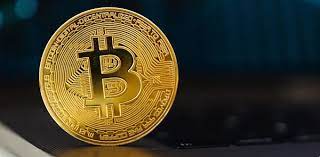Opinion | 19 useful indicators to measure the progress of blockchain
Translation: Li Shubang
So far, there is no deterministic data on the actual rate of return of blockchain projects. A recent survey of 550 executives, at the same time, according to the analysis of 79 blockchain projects by the World Economic Forum (WEF) and Accenture Research (Accenture Research), it was found that the blockchain has not yet been implemented on a large scale on the ground of the enterprise . Analysis shows that executives expect an early return on investment in blockchain projects of 24%, but the actual return is only 10%.
Blockchain advocates need to pinpoint key areas of business in order to measure and record progress. The authors of this survey, Sheila Warren of WEF and David Treit of Accenture, have some suggestions on where they can start, and list some key indicators that may be suitable:
(1) Auditability: The blockchain provides a shared transaction ledger that can fully track any assets and related activities, enabling organizations to "enhance confidence in the generated data without having to manually verify the data."
- Video | OK Blockchain 60 Lecture: How Blockchain Works
- Video | OK Blockchain 60: Why is Blockchain called Blockchain?
- 7 Key construction projects in provinces and cities in 2020 involve billions of funds from the blockchain to help industrial development
(2) In terms of compliance, blockchain can reduce risks. "If not managed properly, non-compliance will bring great risks and damage. But the blockchain will not be tampered with, which can increase users' confidence in the data."
(3) Data management: improve product forecasting. "Blockchain can improve data management in terms of data sources and accuracy by learning more about digital assets and related data."
(4) Data security: prevent data leakage. "Blockchain technology utilizes military-grade encryption technology."
(5) Ownership: Improve customer experience. "Blockchain technology can achieve real digital ownership of real-world commodities and digital assets by creating improved intellectual property and personalized data profiles without having to check the history or current status of the project."
(6) Payment: Eliminate overpayment of invoices. "Blockchain technology can utilize a single shared data source to ensure the accuracy of payments and eliminate the need for manual auditing and tracking payments."
(7) Process automation: resource redistribution. "Enterprises can use blockchain to seek efficiency, cost savings, and improvements in employee productivity and retention by shifting employees' work focus to a job with higher engagement and satisfaction."
(8) Adjustment: eliminate double payment. "Blockchain technology can significantly reduce the overall cost of resolving settlements, while reducing the accumulation of errors and unreconciled items."
(9) Standardization: increase the speed of listing. In a blockchain network, multiple organizations “work together in a blockchain system, and they must agree on common terms, business logic, and business flows because they share access to the same data and apply the same intelligence The contract enables business logic. "
(10) Tracking and tracing: saving resource time. "Distributed ledger technology allows trade organizations to view every step of the supply chain process. Each party can verify the current status and tracking of the product without having to rely on direct communication with other parties in the network."
(11) Data sharing: enhance the value of the data model. "However, with the blockchain, trading partners can share real-time data, as well as the history of the data and any modifications to it."
(12) Flexibility: Reduce downtime. "Blockchain exists in a distributed form. It creates a highly resilient network with multiple shared copies of data, thereby reducing the risk of isolated attacks or events."
(13) Transparency: Improve incident response rate. "The distributed ledger of blockchain technology allows all designated parties to view data in real time. With unlimited transparency, organizations can identify opportunities, improve decisions, and track and track the results of these decisions."
(14) Trust: Reduced business risks. "In the digital world, trust is being challenged, and organizations cannot verify the basic elements. The blockchain helps to achieve and even automate trust by protecting information in an encrypted manner and providing transparency of data status and tracking."
(15) Identity verification: prevent attacks by bad actors. "The core function of blockchain technology is its public and private key encryption technology, which can serve as the basis for authenticating a user across multiple networks, thereby increasing confidence in the entire network and participants."
(16) Identity management: improved retention rate. "Relying on physical documents as the only means of determining the identity of users or objects is no longer meaningful. Blockchain technology can enhance the characteristics of digital identity management and use, while exceeding the limitations of being operated by an organization."
(17) Market creation: New markets have been created. "Blockchain technology has increased market confidence in products and services, while also using shared ledgers, smart contracts, and digital assets to facilitate real-time peer-to-peer transactions."
(XVIII) New and enhanced products and services: income from new products. "New digital assets can exist outside the umbrella of an organization, company or government."
(19) New and expanded partnerships: new distribution channels. "By leveraging digital assets and smart contracts, many of these partners can also have automation components."
We will continue to update Blocking; if you have any questions or suggestions, please contact us!
Was this article helpful?
93 out of 132 found this helpful
Related articles
- Video: Lecture on OK Blockchain 60-Features of Blockchain: Decentralization
- Open Class | How to achieve authenticity in an information-pollution environment?
- How much do you know about the history of Ethereum? Here is a brief history
- Global blockchain status: Asia is the most competitive, and Africa is the largest target market?
- Observation | Xiong'an Blockchain's 3rd Anniversary: From the first tree with an "identity card" to the official opening of the blockchain laboratory
- Yao Qian: Three major scenarios and solutions in which blockchain may be applied to central bank digital currency
- Video | Chen Xiaohua: Two attributes, six dimensions, and one center of the blockchain






